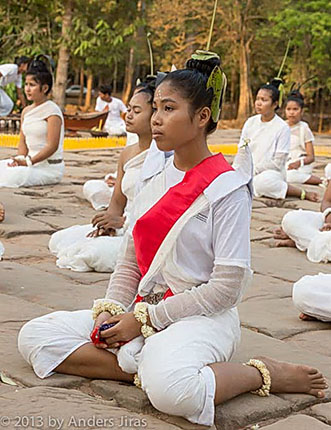
Sacred Angkor Dancers Perform at Bayon Temple
Cambodian dancers from the Conservatoire NKFC Preah Ream Buppha Devi re-sanctify Bayon temple in Angkor with a sacred dance ritual.

Cambodian dancers from the Conservatoire NKFC Preah Ream Buppha Devi re-sanctify Bayon temple in Angkor with a sacred dance ritual.
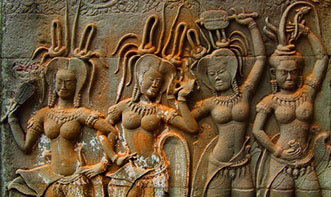
The Khmer civilization that grew to unify most of Southeast Asia between the 8th-14th centuries respected women. Today, we still see their temples filled with images of sacred women –termed devata, apsara or Khmer goddesses – who embody the feminine forces of the universe. While women and goddesses appear as icons in many ancient and modern societies, the Khmers gave sanctified women dominance over their state temples more consistently and more visibly than any other group.
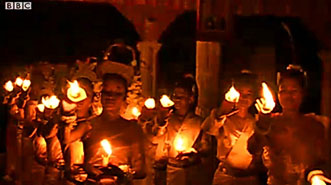
Near the Khmer temple of Banteay Srey at Angkor, “sacred dancers” study the ancient ritual art of Cambodian dance at NKFC’s school.
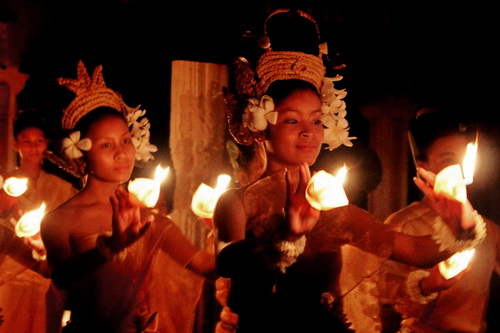
Inside the quiet Buddhist pagoda of Wat Bo, visitors witness a royally sanctioned troupe performing ancient rituals of Cambodian dance in Siem Reap..
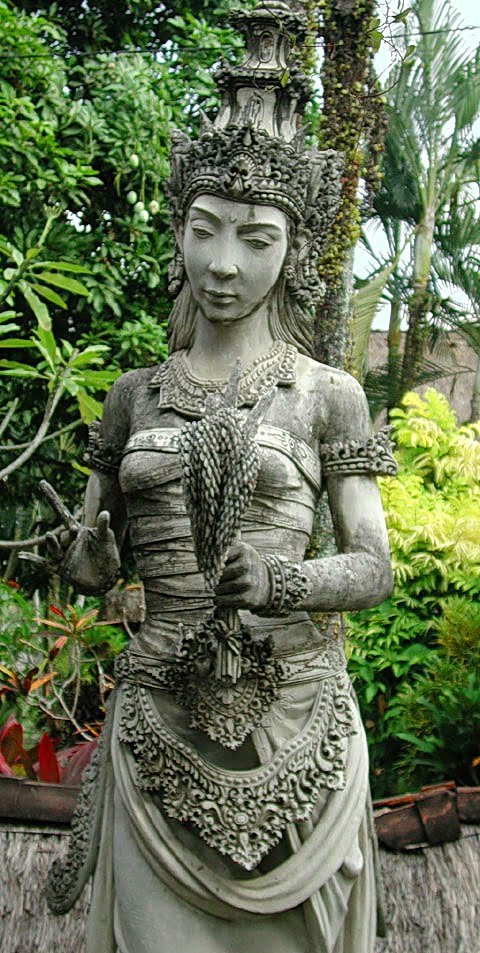
The women of Angkor Wat, frequently called devata and apsaras, are related to many divine, semi-divine and mortal Asian females.
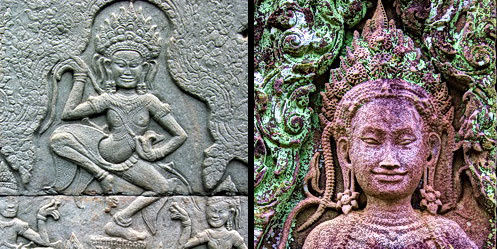
On the towers above, serene faces gaze out over the jungle. But below, Jayavarman VII followed the example of King Suryavarman II by filling his monument with female energy. The portraits of sacred women, now called devata or apsaras depending on their style, surround the Bayon.
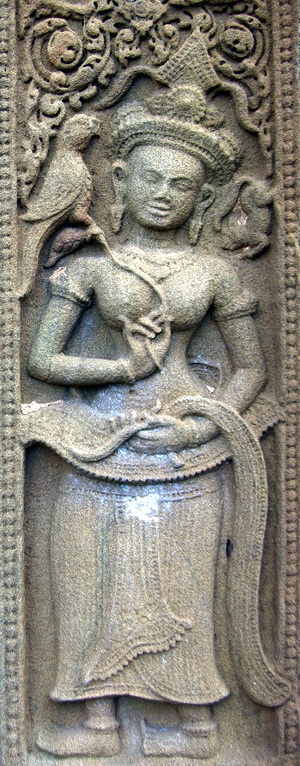
Just one hundred miles to the south, the Khmer civilization sanctified thousands of female images on the walls of their most important temples, both Hindu and Buddhist. But here, in what is now modern day Thailand, only two devata remain, fulfilling a mysterious spiritual mission long since forgotten.

Cambodia’s great kings filled entire temples with sanctified images of women. Why do female images at Preah Khan dominate this extraordinary ancient temple? Khmer devata goddesses in the heart of Preah Khan temple
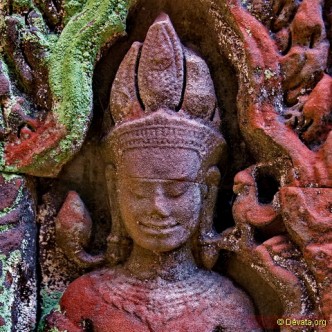
Sacred images of Khmer women still dominate and protect the temple with their auspicious presence. Many stand hidden in shadowed alcoves, seen by few visitors. Preah Khan Khmer temple devata goddesses
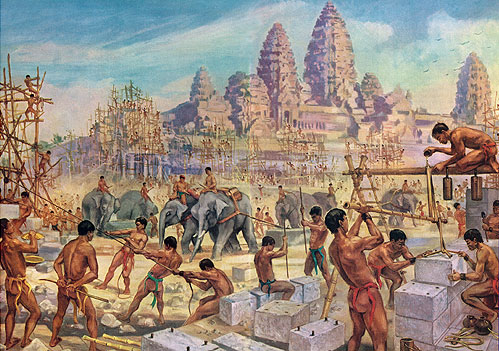
French artist Maurice Fievet created extraordinarily accurate paintings of 12th century Angkor with Khmer scholars Bernard Groslier and George Cœdes.